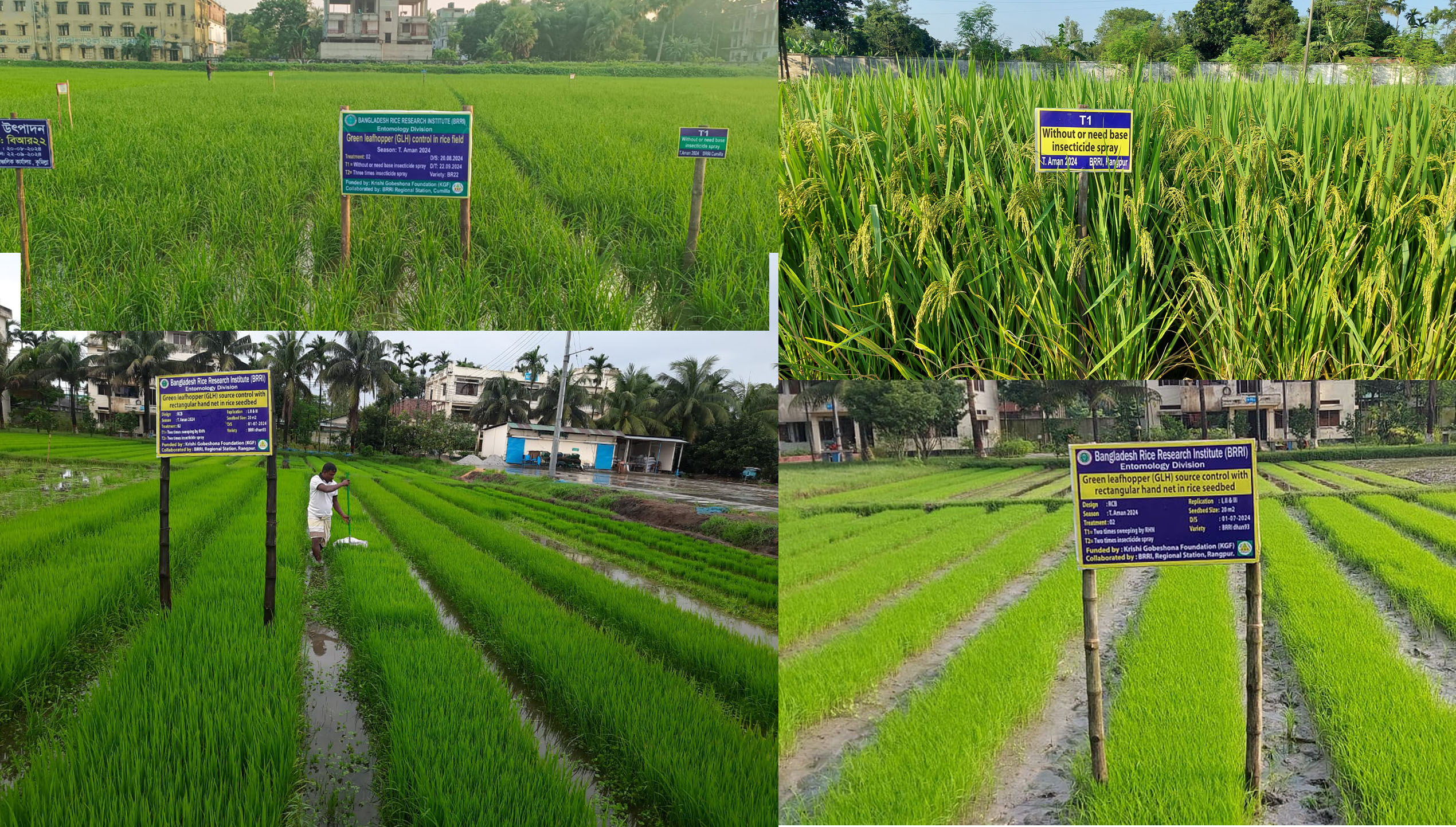Identification and Expression of Heat tolerant genes at reproductive stage and their inheritence in wheat
Green leafhopper (GLH), Nephotettix virescens (Distant) (Homoptera: Cicadellidae) is mainly tungro disease disseminating vector and considered as a major pest of rice in Bangladesh from the mid-1960s (Islam and Catling, 2012) to present. Farmers of our country relied on insecticide to control GLH. It has been reported that the commonly used insecticides have long been losing their efficacy to control rice pests and GLH develop resistance and resurgence against some group of insecticides (Yu et al., 2012; Bao et al., 2016; Matsumura et al., 2018). The main objective of the project is to identify the resistance and resurgence creating insecticides which will help to develop efficient IPM package to control GLH in pandemic areas.
Green leafhopper (GLH) population were collected from Cumilla and Rangpur of Bangladesh and mass reared on the green house of Entomology Division, BRRI to find out the different location specific insect resistance level of different group of insecticides. IRAC resistance test methods 005 bioassay were followed in the experiment. Rice plants with GLH and natural enemies’ population were confined by a plastic mylar film cage to know the effect of natural enemy for the development of GLH resurgence. Field validation trial for GLH source control with rectangular hand net (RHN) in seed bed and field were conducted in BRRI Regional station, Cumilla and Rangpur. Survey were conducted in GLH pandemic areas to know the GLH and natural enemies in those areas.
• Mipcin 75 WP (Carbamate) and Confidor 70 WG (Neonicotinoid) showed 80% or above mortality of GLH at recommended doses. • Dursban 20 EC (Organophosphate) did not show 80% mortality of GLH at recommended or double of the recommended doses. It needs eight time more of the recommended dose (3200 ppm) to find 80% or above mortality. • The Nereistoxin analogue group insecticide Suntap 50SP and Award 40 SC (Insect Growth Regulator) did not achieve more than 80% mortality of GLH at the recommended dose at 48 hours after treatment (HAT). • Nitro 505 EC (Organophosphate + Pyrethroid) though it is not recommended to control rice insect pests but it achieved 100% mortality at 25 times lower of the recommended dose. • Rice arthropods diversity was found more in Rangpur region compared to Cumilla region.
Dursban 20 EC (Organophosphate), Suntap 50SP and Award 40 SC insecticides were lost their efficacy to control GLH in field level. Less diversity of rice arthropods with lower number of natural enemies were observed in Cumilla region due to indiscriminate use insecticides in seed bed. Lowest LD50 values were calculated for Nitro 505 EC indicating higher toxicity and more harmful for fish and aquatic flora and fauna.
Farmers will be able to reduce insecticide use at least two to three times including seed bed and field during rice production for GLH management which will reduce farmers insect management cost and will definitely increase farmers income.
After completion of the projects, the findings will help to farmers to select effective insecticide to control green leafhopper (GLH) as well as devastating tungro diseases of rice. Farmers will be able to control GLH from seedbed by newly developed rectangular hand net (RHN) instead of two times insecticide spray in seed bed. The RHN will be used as a tools of integrated pest management program of the Government.

